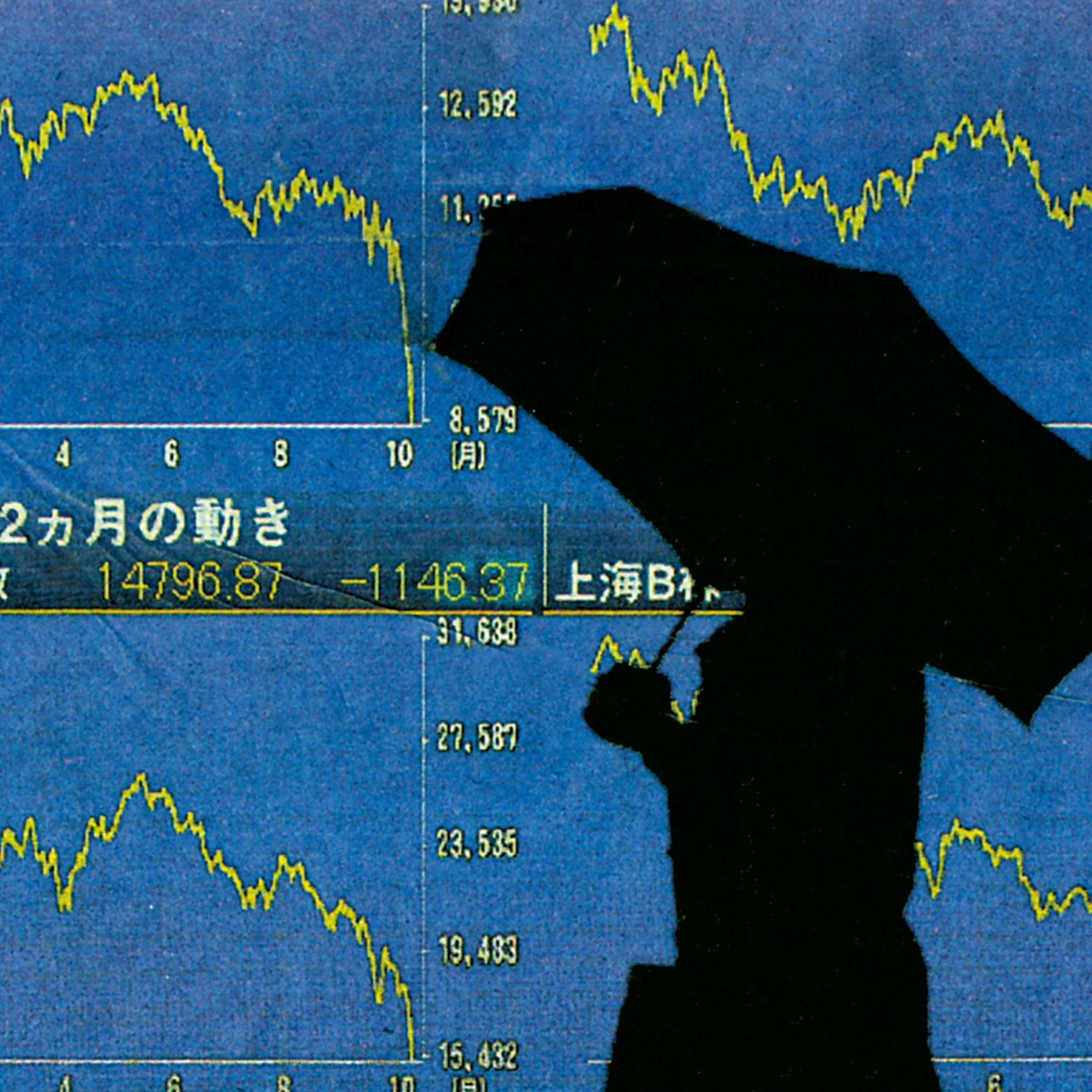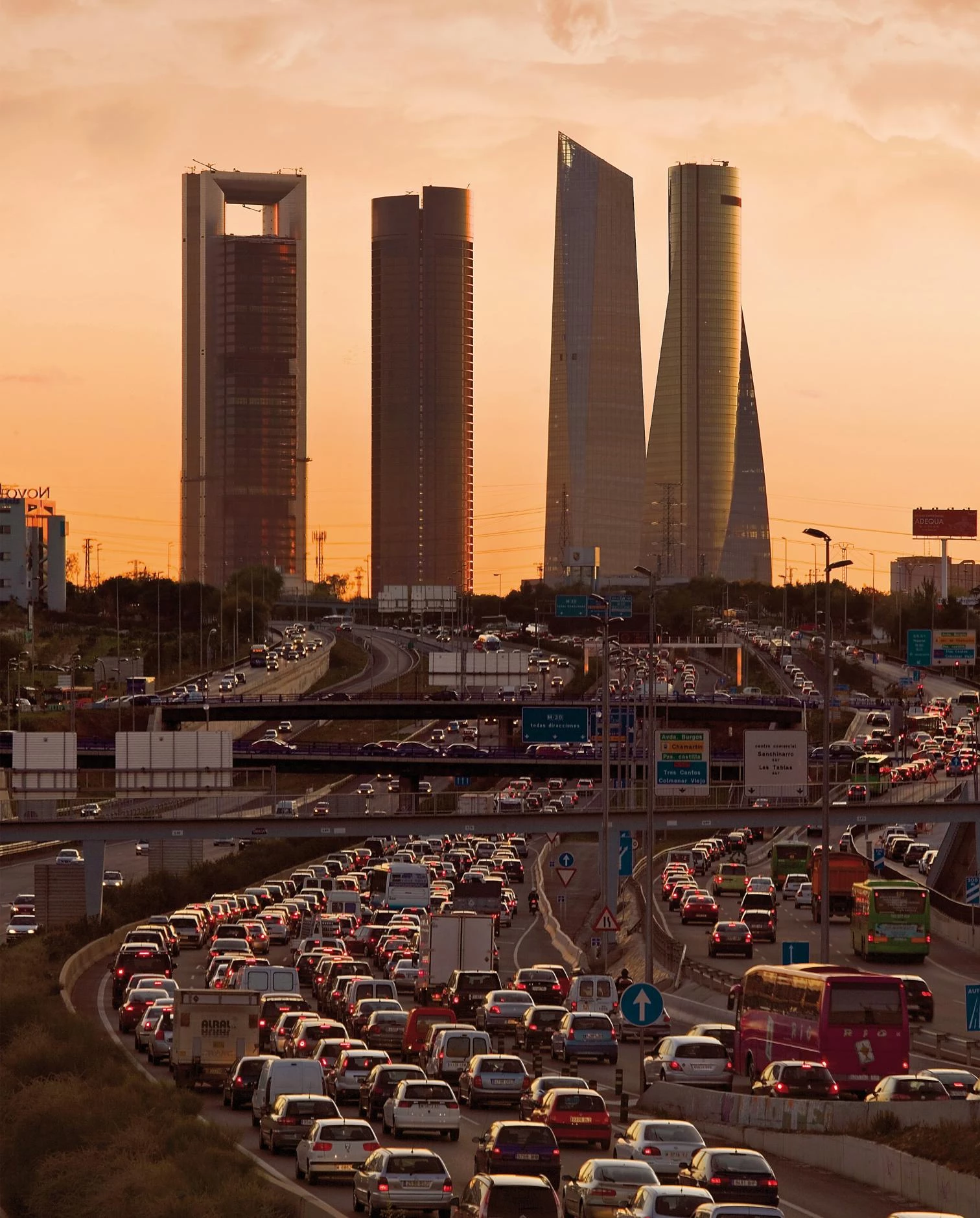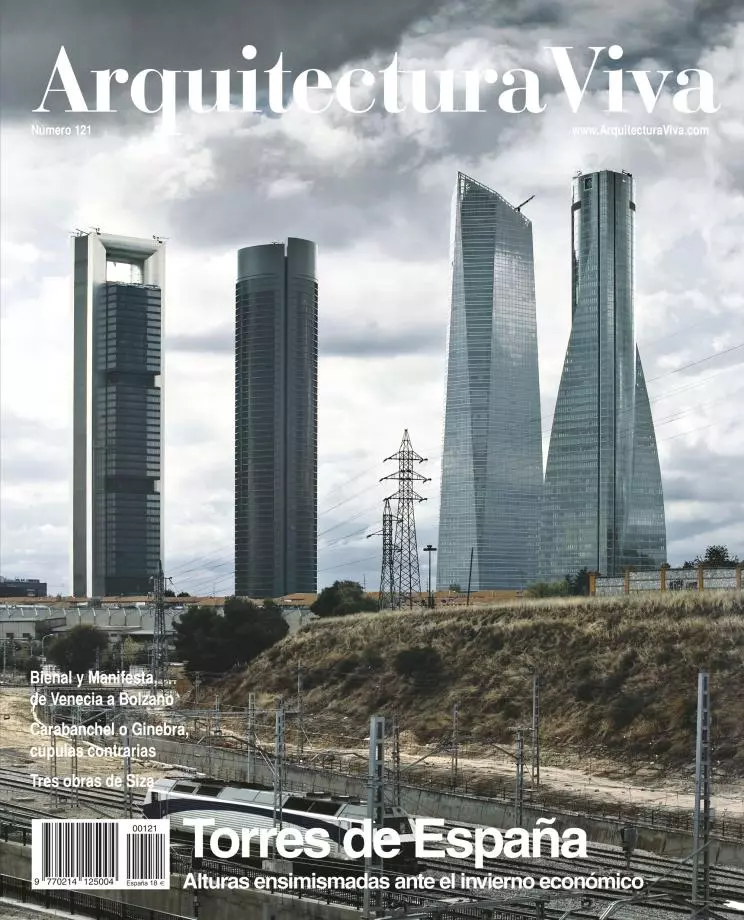
While towers soar, stock markets crash. The completion of the Burj Dubai, the tallest building in the world, coincides with the bursting of the Gulf’s real-estate bubble, and in Spain the four new Madrid towers reach their final height as markets collapse. As often before, the construction of high-rises comes with the ruin of economic expectations. Thus, the Great Depression that began in 1929 was marked in New York’s profile by the tops of the Chrysler and the Empire State, and that same year Madrid saw the opening of the Telefónica building, the first European skyscraper. Once again, the 1973 oil crisis coincided with the topping of the WTC towers and the Sears Tower of Chicago, which would successively be the tallest buildings of the planet, and when the crisis hit Spain a few years later, the completion in Madrid of the Windsor Building and the Bank of Bilbao tower would signal the country’s bust. In 1996, the bursting of the Asian bubble had its architectural correlate in the opening in Kuala Lumpur of the Petronas Towers, once again a world record coinciding with a crisis, and that same year Madrid saw the inauguration of the KIO towers, whose construction had been interrupted in 1993, becoming a symbol of economic decline and social despair during that period of Spanish democracy.
Today, the Burj Dubai has taken the top of the world to the Emirates while the financial crisis drags the economies into recession, and in our country the Madrid towers once again become the backdrop of a disturbing scenario, where the political and business muddles are braided around an international crisis that is intensified here by the housing market collapse: the conflicts around Caja Madrid, which bought its tower from Repsol, are tangled up with the efforts of the banks spearheaded by the Santander to avoid the downfall of Sacyr-Vallehermoso – owner of another of the towers – through the sale of its Repsol shares to the Russian energy company Lukoil, while insurance companies such as Mutua Madrileña, owner of the third of the towers, take stock of the toxic residue left by the real estate crisis, and construction companies such as OHL, owner of the fourth tower, strive to face the crash of the real estate sector. On this stage of intertwined intrigues, the four towers – instead of representing Spanish prosperity or Madrid’s ambitions – rise as a crepuscular symbol of the corporations whose irresponsible behavior has forced governments around the world to plan massive rescues.
It is not hard to understand why so many major banks and companies prefer the low-profile of business campuses to the vibrant visibility of skyscrapers. So it happened with the Santander, which commissioned Kevin Roche with the construction of its financial city in Boadilla del Monte, and so it will be in the case of the BBVA, which has recently presented the campus project by Herzog & de Meuron for their new Madrid headquarters, replacing the tower by Oíza in Azca; so it has occurred with Telefónica, which already occupies the campus designed by Rafael de La-Hoz, and so it goes for Repsol, which has entrusted its horizontal headquarters to the same architect. Only savings banks seem to demand a different urban presence, and just like La Caixa changed Barcelona’s skyline with vertical landmarks for companies of its group such as Agbar or Gas Natural, Caja Madrid also reaches for the skies and will transfer its logo from one of the KIO towers to that of Foster in the old training grounds of the Real Madrid. But savings banks’ status as semipublic entities allows them extravaganzas such as the one intended by Cajasol with a skyscraper that dwarves the Giralda facing the historic center of Seville.
Inevitably, this symbolic-economic approach pushes to the background the strictly architectural commentary on the Madrid towers, which indeed have some aesthetic appeal, clustered together as they are in an urban void that makes them more imposing than would be expected from their height of 235-250 meters: quite something around here, but still very far from current records (the Burj Dubai soars to 818 meters, and the Nakheel Harbour designed in the same emirate of the Persian Gulf hopes to reach the mythical kilometer), and much below the registers marked eighty years ago. However, their going up at the same time, their similar height and their different character makes them somehow appear like actors on a stage, frozen in a conversation that transforms them into pieces of a hermetic or metaphysical still life, and that at night rise above the city with an intimidating luminous presence that goes from science-fiction futurism to the imprecise world of dreams. Their differences are many of course, but they are blurred by their choral presence, lined up as four gunmen fighting a duel or four girlfriends merrily clacking away down the street on a Saturday night, and this compulsory plural presence – evident even in the foreshortened perception or in the dynamic vision that one has when driving by – weaves their distinct personalities into a single image that only allows a group portrait.
We may, of course, highlight the unique nature of the skyscraper of Norman Foster, the only one that places the services and circulation cores on the perimeter – in the wake of his innovative Hong Kong tower –, with the extra cost that this arrangement necessarily involves, but with the quality of design that one may expect from the British office, here expressed by the monumental lintel that tops the building, which hopes to be a tall arch and that from afar looks rather like a frame that supports the three sets of floor plates. We can also comment on the tower by Rubio & Álvarez-Sala, which reconciles views, solar protection and wind behavior with a double facade of glass scales that combines sustainable good sense with aesthetic appeal, clearly showing that it is not really necessary to hire a big international firm to build efficient and elegant skyscrapers. We can also review the work of César Pelli, the Argentina-born US architect who reached the world record with his Petronas, and that in Spain has three skyscrapers under way, among them this one in Madrid, swiftly solved with an alteration in section that facets the tower, tapering the top floors and giving the whole an appearance of a stout obelisk of sharp, shiny edges. And we can finally refer to the skyscraper designed by the New York architect Henry Cobb, who again modifies the section to generate a distinctive profile, in this case moving from the square floor plan at the base to the lens-shaped floor at the top through a curve that endows the building with the friendly image of a cartoon rocket, somewhat evocative of the one with which Hergé takes Tintin to the moon.
But all these considerations fade away before the family air of the four towers, described by their architects with very similar words, in such a way that they all emerge with energy from the ground, vibrate with life or movement, and express a dynamic optimism. These well-meaning intentions are absorbed by the whirlpool of the crisis, that plunges the symbolic ambitions of skyscrapers into an abyss, leaving an ash aftertaste. We are dizzied by twirls, but also by heights, and that common vertigo marks the time of the world. Towers rise, markets fall, and we do not know whether these skyscrapers will accompany us through our season in hell.







